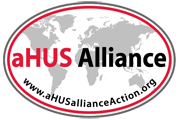The renaming of Primary aHUS is inevitable. The experts have said so and the name change creep, albeit unofficial, is gathering pace.
How do the new names for Primary aHUS , genetic complement mediated thrombotic microangiopathy or GC-TMA, anti-complement factor H antibodies thrombotic microangiopathy with the acronym CFHAb-TMA and complement-mediated thrombotic microangiopathy with no known pathogenic variant with the acronym NGC-TMA become official.
To answer that Rudyard Kipling’s (of Jungle Book fame) “Six Honest Men” must be asked.
Their names are What and Why and When And How and Where and Who.
The answers to the Why and What have have been answered to some extent in the results of a nomenclature review which began four years ago . A report about it can be read HERE.
It is more about the Why than a full answer to the What.
The Primary aHUS changes have been proposed; but the renaming of Secondary TMAs that Primary aHUS patients have been lumped in with are less than complete.
So that “what” still has much work to be done on it.
Once done how will it become official?
The committee ( the who ?) making the final structure and names will have to have the authority for that to be done. So that process would have to fit in to the how it becomes official?
How does a disease name become official? The only global authority for that would be the World Health Organisation.
So is the WHO part of the “who”?
Well the WHO does have a tool for doing that which “standardizes the language used by health professionals worldwide in diagnosing, reporting and monitoring diseases, injuries and causes of death”.
It is the International Classification of Diseases and its 11th version was released just earlier this year.
ICD-11 includes the codes to be used in medical records for the diseases that the WHO determines are related to the official names of the diseases.
It is in 14 languages and is linked to OTHER terminologies and classifications such as MEDRA, and importantly for Primary aHUS, Orphanet. There are others!
Browsing ICD-11 for the three disease terms Primary aHUS , Thrombotic microangiopathy and Complement mediated the following was found.
Primary atypical hemolytic uremic syndrome found no results, so never official, despite the KDIGO name change in 2016.
However aHUS search alone found Code 3A10.Y which is in :
Other specified hereditary haemolytic anaemia
Atypical haemolytic uraemic syndrome*
Atypical haemolytic uraemic syndrome with factor B anomaly
Atypical haemolytic uraemic syndrome with factor I anomaly
Atypical haemolytic uraemic syndrome with thrombomodulin anomaly
Atypical haemolytic uraemic syndrome with factor H anomaly
Atypical haemolytic uraemic syndrome with C3 anomaly
Atypical haemolytic uraemic syndrome with MCP or CD46 anomaly
ALSO under code 3A21.Y is
Other specified acquired haemolytic anaemia,
Non immune Atypical haemolytic uraemic syndrome with anti-factor H antibodies
Microangiopathy was found under 3B65 with 3 sub types. Acute intravascular, chronic intravascular and not elsewhere classified. But notably this message ….
“Coded Elsewhere
Thrombotic thrombocytopenic purpura (3B64.14)
Haemolytic uraemic syndrome (3A21.2)
Methylcobalamin deficiency type cbl G (5C50.B)
Hereditary haemolytic uraemic syndrome (3A10.Y)”
“Complement mediated” search produced no results.
So clearly some work still be done here! Even for TTP and HUS.
ICD-10 was replaced by ICD-11 in 2022 after ICD-10 had been in use since 1993.
“Unlike ICD-10, which received periodic updates and revisions, ICD-11 is designed to be continually updated and maintained in real-time. This dynamic approach allows for timely incorporation of new medical knowledge, emerging diseases, and changes in healthcare practices, ensuring that the classification system remains current and relevant over time.”
Does this mean that if WHO is the who for official recognition does an update of ICD-11 determine the when and where any new disease terminology can officially begin being used?
Or can physicians start using the new terminology and map it back to the codes which WHO permit in ICD-11 prior to update. A two tier approach. Or three tier if “aHUS researchers” continue to use their own terms.
Egg-Chicken or Chicken-Egg!?
Another “who” is needed to answer that.
Who is going to do the renaming structure and coding compatible enough for The WHO?
That is the $64,000* question!
Soon it will be four years since this so called aHUS renaming project began and there is speculation about when or even if it will be completed with sparse communication about progress, if any, happening.
Article No. 725
* the top prize from a US Quiz show from the 1940s would be worth more than $900,000 to today !!

aHUS Nomenclature: Bridges to the Future
Scientific advancements in the last decade have yielded promising avenues on multiple fronts, including those related to atypical HUS and other thrombotic microangiopathies. However we’ve now reached a point where…

